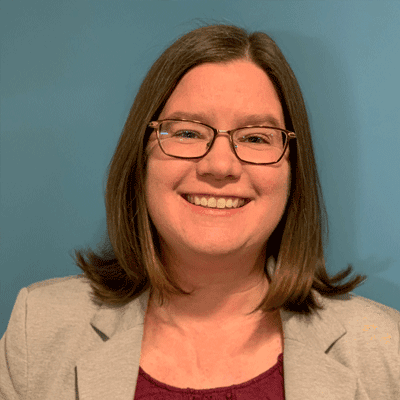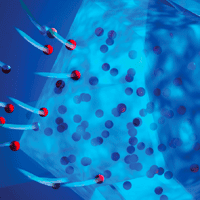Professor Watson is being recognized for her innovative and impactful contributions to deaminative cross-coupling reactions. In this exclusive interview, read about what inspires her research and her advice for chemists just entering the field.

Annually, ACS Catalysis, in partnership with the ACS Division of Catalysis Science and Technology (CATL), has the pleasure of recognizing outstanding recent contributions to catalysis by an individual or a team with the ACS Catalysis Lectureship for the Advancement of Catalytic Science award. The journal strives to recognize significant and impactful advances with an emphasis on those that have not been recognized by other awards.
In recognition of the large scope of catalysis covered by ACS Catalysis, the award rotates between recognizing excellence in heterogeneous, molecular/homogeneous, and biocatalysis/enzymology. This year, the focus was on molecular/homogeneous catalysis.
It is our pleasure to announce that the 2023 awardee is Professor Mary P. Watson from the University of Delaware (United States). Professor Watson is being recognized for her innovative and impactful contributions to deaminative cross-coupling reactions.

Read a brief interview with Prof. Watson
Can you give us a short overview of the research you are currently undertaking?
My research group is focused on developing new transition metal-catalyzed methods for organic synthesis. In particular, we identify starting material classes that would be useful but aren’t traditionally used in transition metal catalysis and develop a suite of methods to convince synthetic chemists to consider those new starting material classes as they design their synthetic routes. We especially focus on starting material classes that are diverse and abundant, so that our methods enable access to a wide variety of possible products.
Right now, we’re really focused on developing deaminative cross-couplings, wherein we activate primary amino groups as Katritzky pyridinium salts, and then use them in nickel-catalyzed cross-couplings. Because of the ubiquity of primary amines in molecules ranging from simple building blocks to advanced pharmaceutical intermediates to peptides, we’re having a lot of fun thinking about the different transformations that will be useful in each of those contexts.
What inspired you to pursue your area of research?
As a student, my first research experience was in Prof. Ken Wagener’s polymer lab, and it was incredible to me the impact that alkene metathesis was having on how people thought about making polymers. As I learned more about catalysis, I fell in love with the idea that homogeneous transition metal catalysts can induce organic molecules to undergo transformations they would never otherwise do, and that they can do it with exceptional control over chemo- and stereo-selectivity.
Later in grad school and in my postdoc, I was really inspired by researchers who were using unorthodox substrates in transition metal-catalyzed reactions like Yoshiaki Nakao’s work with aryl nitriles and Ernest Wenkert and John Dankwardt’s work with aryl ethers. This inspiration set my group on a course to look into activation of carbon–oxygen and carbon–nitrogen bonds.
The third inspiration, and the one that I rely on most often now, is the creativity of my students. They are the ones that are pushing to think differently and identify new starting material classes and new coupling partners. We got into using Katritzky pyridinium salts because one of my former students, Corey Basch, identified them as a potential electrophile for cross-couplings and got our first Suzuki–Miyaura arylation to work.
What does winning this award mean to you?
This award is really special because it honors all the exciting accomplishments of my co-workers and collaborators. When we started doing deaminative cross-couplings, a lot of people told me that they thought it was foolish to remove nitrogen from molecules, and even I was skeptical that it would have more than a niche application in late-stage derivatization. One of the nicest surprises of my career is that our deaminative cross-couplings have been more useful than we imagined, especially to researchers working in pharmaceutical discovery.
What’s next for your group?
Well, there are always more functional groups that deserve a place in transition metal catalysis. I am also excited that some of our methods are developed enough to move into applications, like peptide functionalization.
What’s one piece of advice you’d give to someone just entering the field?
Go after your favorite idea – even if it’s not what everyone else is doing or thinking about. But also listen to feedback and decide what advice to take (and what to leave).

Stay Connected
